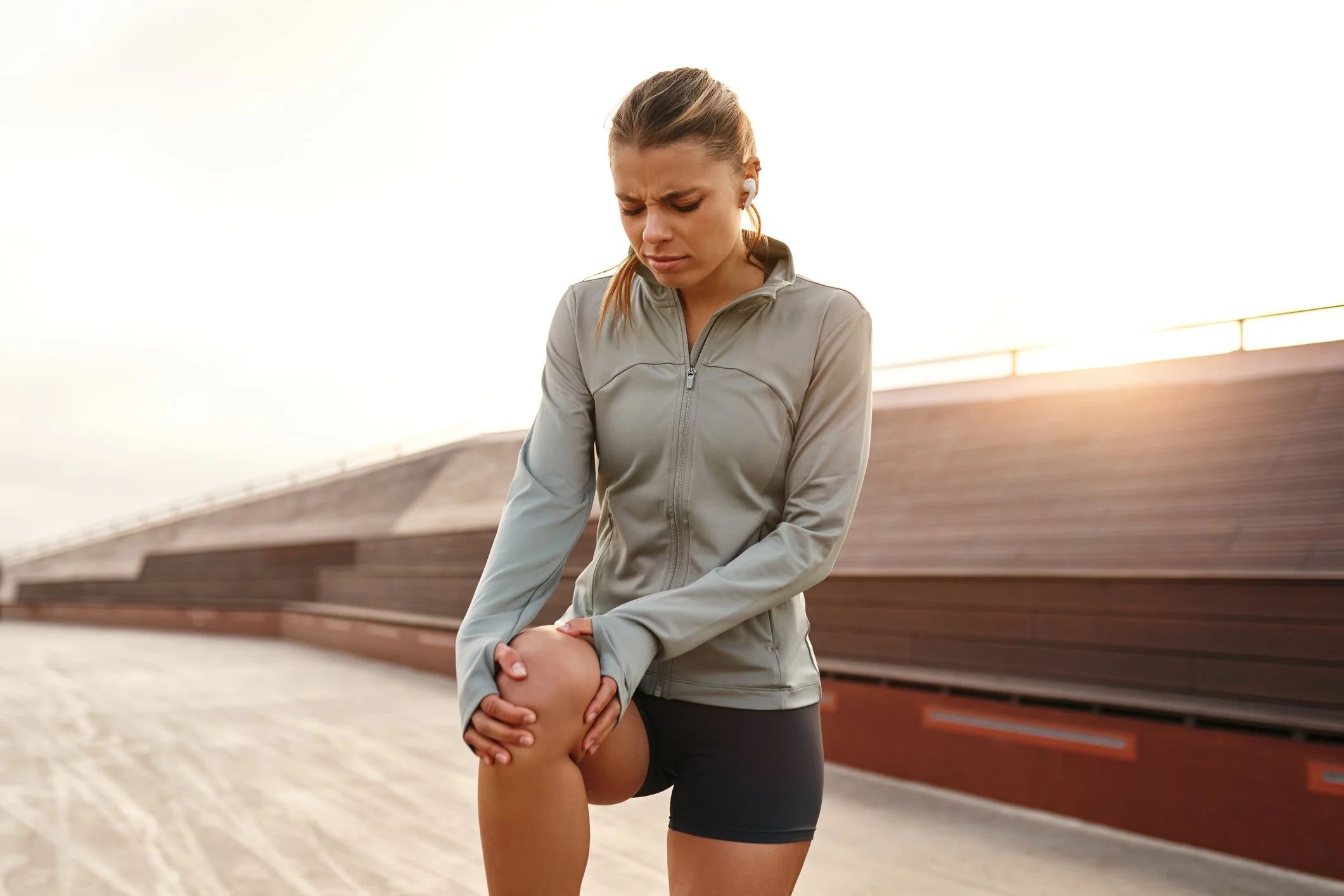THE MECHANICS BEHIND RUNNERS' KNEE: UNDERSTANDING PATELLOFEMORAL PAIN SYNDROME
If you've ever felt a nagging ache around your kneecap after a long run, hike, or even just going up and down stairs, you're not alone. This condition, commonly known as runner’s knee, is formally referred to as patellofemoral pain syndrome (PFPS). While it’s frequently associated with athletes, it can affect anyone whose movement patterns put extra stress on the knee joint.
Let’s break down what’s actually happening in the body that leads to this type of knee pain.
THE CHAIN REACTION: HOW THE PAIN DEVELOPS
Runner’s knee isn’t caused by a single injury. Instead, it's the result of a repetitive chain of motion breakdowns that puts the kneecap (patella) under constant stress. Here’s how that chain unfolds:
1. Foot Overpronation
When your foot excessively rolls inward while walking or running (a motion called pronation), it causes the leg to rotate in a way that throws off alignment from the ground up.
2. Internal Rotation of the Tibia and Femur
As the foot pronates, the tibia (shin bone) rotates inward. This movement causes the femur (thigh bone) to follow suit. Imagine your entire leg twisting subtly with each step you take—over time, this matters.
3. Pelvic Instability and Tilt
Misalignment doesn't stop at the leg. It often results in an anterior pelvic tilt and instability in the lumbo-pelvic-hip complex—a fancy term for the lower back and hips. When this area lacks proper stability, it fails to guide the leg’s movement effectively.
4. Quadriceps Muscle Imbalance
Now enter the quadriceps, the large muscles in the front of your thigh. When alignment is off, these muscles tend to pull the kneecap laterally (outward) instead of guiding it in a smooth up-and-down motion.
WHAT HAPPENS TO THE PATELLA?
Your kneecap (patella) sits in a natural groove at the end of your thigh bone and normally glides smoothly within this groove as you bend and straighten your leg. However, with excessive internal rotation and uneven muscle pull, the patella can shift out of alignment, moving outside its intended path. Instead of resting in the center of the V-shaped groove, it rides up on the outer (lateral) edge and grinds down on the inner (medial) edge. This misalignment can occur up to 10,000 times a day during routine activities like walking or climbing stairs.
THE DAMAGE ADDS UP
Over time, this abnormal movement pattern wears down the cartilage underneath the kneecap. To put it in perspective: The cartilage here is only about five cells thick—incredibly thin for the amount of stress it endures. As the cartilage erodes, the bones can begin to rub against each other. That’s when you start to feel pain—sometimes dull and aching, sometimes sharp and persistent.
WHAT CAN BE DONE?
Understanding the mechanics of runner’s knee is the first step toward treating—and more importantly, preventing—it. Addressing the root cause usually involves a combination of:
Custom Orthotic Insoles for corrective foot support
Targeted strength and stability exercises for the hips, glutes, and core
Stretching and mobility work for tight muscles that contribute to imbalance
Activity modification and physical therapy to re-educate movement patterns
THE BOTTOM LINE
Runner’s knee is more than just an overuse injury—it’s a mechanical issue involving your entire lower body. From your foot to your hip, each joint and muscle plays a role in keeping the knee tracking properly. When even one link in the chain falters, it sets the stage for pain and breakdown.
The good news? With the right intervention, the cycle can be reversed, and you can move better, stronger, and pain-free.
If you or someone that you care for suffers from pain in the feet, ankles, knees, hips, and/or lower back, the pain may be due to misalignment caused by faulty biomechanics, which can be treated and corrected with the help of custom orthotic insoles. To schedule your comprehensive biomechanical evaluation, visit drleecohen.com or call our Sports Medicine Podiatry Center and book an appointment at our Marlton, N.J. Sports Medicine Facility or Ridley Park, P.A. Office location with one of our podiatric sports medicine specialists today by calling (610) 522-9200.



